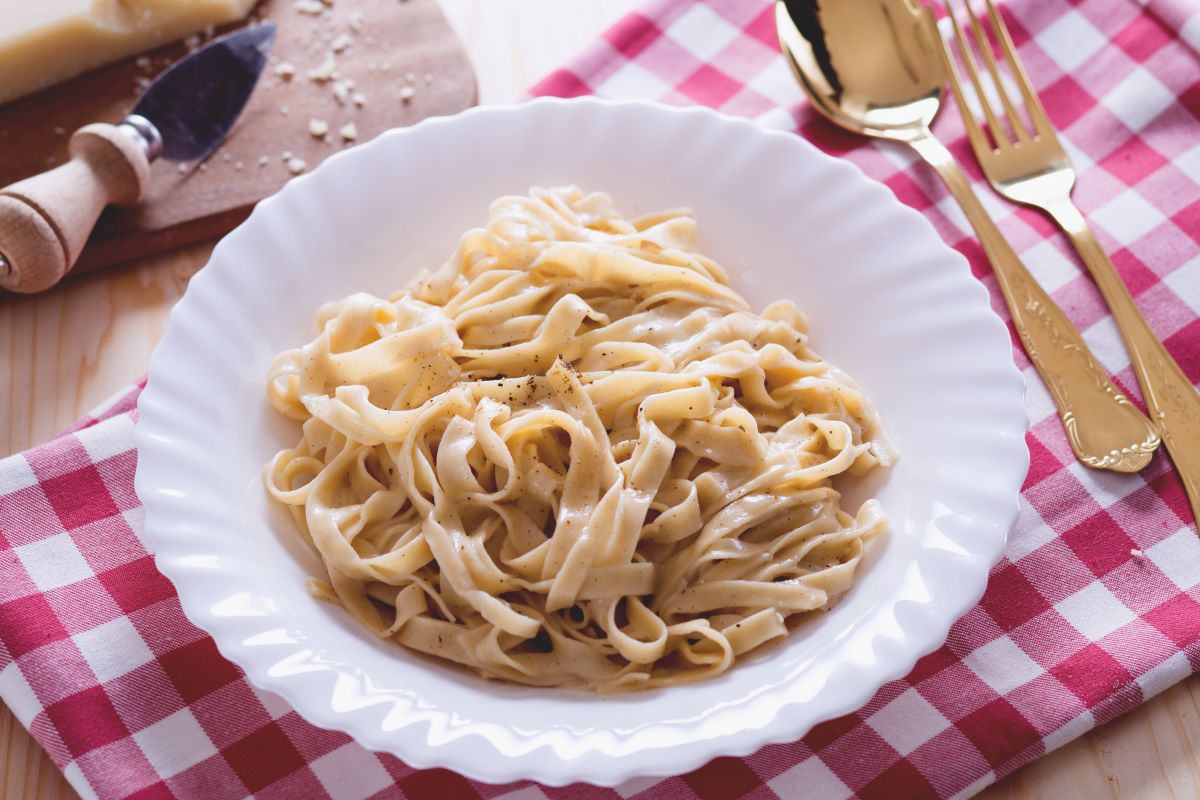Tagliatelle
- Average
- 30 min

Did you know that the number 1 dish of Italian restaurants in the United States is a recipe that is entirely unfamiliar to us? We're talking about fettuccine Alfredo, so popular in America that it almost seem to be a dish of Italo-American tradition! And yet nothing could be more Italian than fettuccine Alfredo, a simple and delicious egg pasta served with lashings of butter and parmesan cheese. The recipe was invented in 1914 by Alfredo, the owner of a restaurant in via della Scrofa, Rome, with the aim of getting his wife's strength up after she had been weakened by pregnancy and giving birth. She liked the dish so much that she suggested her husband should add it to the menu and from that day on it became the restaurant's flagship dish! However, the real consecration of fettuccine Alfredo came when Mary Pickford and Douglas Fairbanks, two famous Hollywood actors, tried the pasta dish on their honeymoon in Rome and were so impressed that as a token of gratitude they gave Alfredo two golden pieces of cutlery: a spoon and a fork, inscribed with a dedication: "To Alfredo the King of Noodles". From that day on, Alfredo's restaurant became a favorite destination of American stars in the roaring Twenties, as well as the population of Rome's Dolce Vita, contributing to the success of the dish across the ocean! So what are you waiting for? Get kneading that dough and prepare some fettuccine Alfredo for your friends, we're certain you too will earn the title of "king of fettuccine"!

To prepare fettuccine Alfredo, start by making the fresh egg pasta: sieve the flour 00 in a bowl (perhaps start with a little less than the full amount of flour and add more if necessary) 1, and add the eggs 2. Knead by hand to obtain a homogeneous dough 3, then place it on a worktop and finish kneading; if the dough seems too soft, you can add a little more flour, if it appears too dry, moisten with a little water.

When the dough is firm and elastic, roll it into a ball and wrap it in plastic wrap 4. Leave to rest at room temperature for 30 minutes so that the gluten relaxes and the dough is easier to roll out. After half an hour, sprinkle a little flour 00 on the work top and divide the dough into 4 parts using a scraper 5: knead one part at a time and keep the remaining dough covered in plastic wrap so that it doesn't dry out. Lightly sprinkle some flour onto the part you are about to knead 6

and feed it into the pasta making machine, on the thickest setting 7; add a pinch of flour to prevent the dough from tearing 8. Repeat the operation several times, working your way up to the penultimate setting 9. If you do not have a pasta making machine, you can roll out the dough with a rolling pin; wrap the dough around the pin and unroll it several times, until it is a few millimeters thick.

Now divide the sheets of dough into 2 or 3 parts according to length 10 and feed them through the machine once more, on the penultimate number to prevent them from shrinking 11. Sprinkle the semolina over the pasta sheets 12 and leave them to dry for a couple of minutes. In the meantime, bring some salted water to the boil in a saucepan, to cook the fettuccine.

Once the pasta is dry, take a sheet and wrap it around itself from the shorter side, taking care not to press, so that the overlapping layers do not stick together 13. When you succeed in making a regular shaped cylinder, cut into roughly 4 mm thick slices using a knife 14. Unroll the slices, holding them by one end 15,

roll the resulting fettuccine around your hand to form a nest 16 and leave them to rest on the work top; proceed in the same way with the rest of the pasta sheets. When the fettuccine are ready, cook them in the water which will have come to the boil by now 17. As the pasta cooks, it'll only take 2-3 minutes, prepare the sauce: melt the butter on a very low flame in a capacious pan, but be sure not to burn it 18.

Add a ladle of pasta cooking water: the starch it contains will help you create an even creamier condiment 19. Drain the fettuccine and place them in the pan with the butter 20, add another ladle of cooking water 21 and briefly saute, stirring rapidly all the while.

Now remove from the heat and add the grated parmesan cheese 22; last of all, season with a pinch of salt 23 and a generous grating of black pepper; stir once more to thoroughly coat the pasta in the sauce. Your fettuccine Alfredo are ready to be served 24!